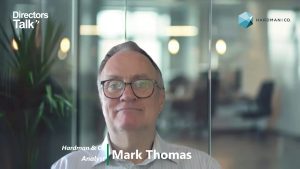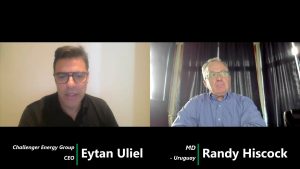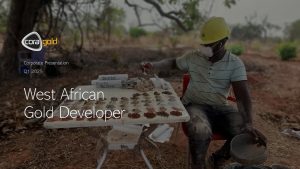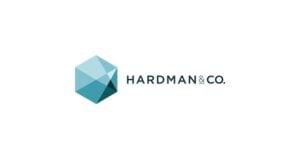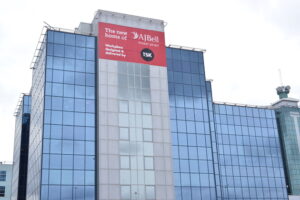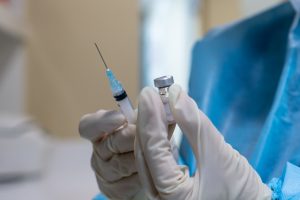Plant Health Care plc (LON:PHC) Chief Executive Officer Dr Chris Richards caught up with DirectorsTalk for an exclusive interview to discuss their interim results for the six months ended 30th June 2018.
Q1: Interim results published for the six months ended 30th June, can you talk us through the highlights for 2018 and in particular, the first half of the year?
A1: 2018, the market expects us to do $10 million of sales this year, clearly in the first half we only did $3 million which gives us $7 million to achieve in the rest of the year. I’d like to make the point first that the business is consistently heavily weighted to the second half and it’s going to be a little bit more so this year, but we remain extremely confident of meeting market expectations.
Particularly, we’ve done a lot of work in the US and we’ve got launched coming up in corn and soy with a very strong partner and we have orders in hand for those launches. This is also going very well in Brazil which is where the second half is, again, bigger than the first half and things are going very well in Mexico. We’re seeing some good growth, we ended up with more inventory than we expected in Africa, the season in southern Africa starts in September and goes through to April and our distributor there was a bit over exuberant on what he expected to achieve. So, we ended up with inventory there so we didn’t make any sales in the first half of this year but that should come back in the second half.
So, we remain very confident about meeting expectations for 2018.
Q2: I just want to pick up on some of those points. Brazil, you’ve seen increased traction there with Harpin 𝜶β, how will this impact on your revenue stream?
A2: We launched, in February this year, into sugarcane in Brazil and that’s a really exciting opportunity for us. We’re seeing amazing technical results, we’re seeing yield increases on average from our demonstration trials of close to 20% and sometimes a bit better than that which is quite remarkable. So, the return on investment for the sugarcane grower is well over 6 times so we’re excited about that.
We’ve got a tremendous partner, Coplacana and Coplacana sells more than half of all the agrochemical inputs that go into sugarcane in Sao Paulo state and just in Sao Paulo state, they group 6 million hectares of sugarcane, 10 million in total in Brazil.
So, the launch which happened in February this year went very very well. We sold $400,000 just as a launch quantity and we will sell a bit more than that in the second half, that product is in Brazil and being invoiced as we speak because the next application season is September to November. In addition to our sales through Coplacana, we are just making our first sales now outside Sao Paulo state through a large group called Gaia and they’ll be selling into soya seed treatment as well into some areas of sugarcane outside of Sao Paulo state.
So, we’ll do more than $1 million in Brazil this year and if you look mid-term, it would not be unreasonable, and I’m not making a forward-looking statement on this but if we were to treat only 2.5% of the sugarcane out there, that would give us $5 million of sales in the mid-term. So, as a benchmark, if we were selling $5 million-£10 million in Brazil in 3-5 years’ time, that would not be an unreasonable expectation, again I’m not making a forward-looking statement but as a benchmark I think that’s pretty good. So, Brazil is exciting for us.
The other important thing about Brazil is getting paid quickly and on time, we’re selling through strong partners who are paying us promptly and that’s extremely valuable and important to a small company like Plant Health Care where cash is key.
Q3: In your statement, it refereed to the launch of Harpin 𝜶β in corn in the USA, can you expand on that for us and what will come next?
A3: Well, corn is very very exciting for us, we’ve been trying to get into corn for some time and there were technical things that held us back. We have now cracked the technical issues and we have developed a very exciting product which is a mixture of our Harpin 𝜶β with what’s called a fluency agent. A fluency agent is essentially something which helps the corn seed go through a high-speed planting machine and avoids blockages in that planting machine.
There’s 90 million acres of corn in the US and it’s an amazing thing that the US farmer can plant those 90 million acres in a week because it’s really critical to get corn out there quickly when the climate is right, and they’ve got these high-speed planters. So, this is a product which farmers use to boost the yield through Harpin and we’re getting 3-5% yield increase from Harpin and they also get the fluency agent in there.
Even more excitingly, we’re working with a very very strong partner, I’m not permitted to say who that partner is but there are four partners who represent more than 80% of the agrochemical market in the US and it’s one of them and they have access to about a quarter of those 90 million acres. They’re very very excited about this, we launched the product last week and we will be supplying to our partner over the coming weeks for delivery to farmers who take early orders before the end of this year.
So, again without making a forward-looking statement, in the mid-term, 5% of that market would represent $5 million sales for us in 3-5 years’ time so that’s a really big opportunity for us, we’re really excited about that, as is our partner.
In soy, it’s a different product but a similar concept. In this case, our partner, one of the services they provide for soy growers is seed treatment at the retail store and they will be offering our seed treatment with Harpin 𝜶β at their retail stores. That’ll be launched fairly soon and that, again, is worth similar amounts mid-term to us in soy.
So, we see our sales in the US, this year, as being very very exciting and that it just the start of the potential we see over the next few years.
Q4: Soy beans, can you talk us through the trials that are going on in Brazil, how does this benefit Plant Health Care?
A4: Clearly, we set up trials 12 months ago with a series of very large partners to test whether our new technology, PREtec, the plant response elicitors, whether they would have a beneficial effect in disease management in soy. We’d done a couple of years’ work where conventional chemical treatment of disease really did not give very good control and that’s a major problem in Brazil and use of our Innatus PREtec products, particularly PHC279, raised the levels of disease control substantially where chemical treatments didn’t work.
Surprisingly, in this last crop, conventional chemistry worked, there are many potential reasons for that, we don’t fully understand it, but the result is when conventional chemistry works, the additional benefit of applying PHC279 frankly was pretty limited so that was very disappointing for us. However, we’re not giving up because it may not be the same in other years, these things are very weather-dependent, and in addition, what those trials showed us is a significant yield increase in soy, in Brazil from seed treatment and an early application after the crop germinates.
So, we’ll be trying that again this year, we still believe that at least one or two of our partners will also try that but it’s a setback. It means it’s going to be a year or two before we’re able to move forward in Brazil, though the opportunity still exists but it’s gone further out in time Frankly, we remain very excited about the longer-term potential of our plant response elicitors, both in Brazil and elsewhere, but we’re not going to give a timescale for when we expect to get technology licences.
Q5: Can you expand on the pilot scale production of improved peptide formulations and product registrations?
A5: That’s really important. We’ve made very exciting progress in both of those because clearly in order to sell a product you need to show that it works, you need to be able to produce it at adequate cost of goods and you need to be able to get it registered. On the production side, particularly for biologicals, there’s a lot of scepticism about this but we turn out to be really really good at this.
In our laboratories, we set out in the middle of 2017 doing pilot production, particularly in our lead product PHC279, and we set ourselves a target to reach by the end of 2018 which would give us a cost-effective product and I’m delighted to be able to say that we achieved double the productivity than we anticipated.
So, we are very confident that we can make PHC279 at a cost which allows margins for both ourselves and our partners and we’re now following through with other of our lead peptides and several of them are looking very good in that regard. So, we’re making good strides towards the ability to make products.
Finally, on registrations, in fact we’ve submitted for registration in the USA and all being well, we would expect to get PREtec peptides registered within about 18 months and Brazil will then follow although Brazil takes a little bit longer.
So, I think there’s a very important element of progress which will allow us in due course to accelerate the commercialisation of PREtec through our partners.
Q6: So, with all that in mind, how do you view the prospects for the company over the next 2 years?
A6: I’m very exciting about Plant Health Care right now, particularly the growth in our commercial business. Frankly, what we have to make sure is that we live within the cash that we have and the cash we can generate from our commercial business and we’re making great progress in that.
Our commercial business will generate significant cash this year which means that the company’s cash burn will be less this year than it was in 2017, we have made plans which ensure that we are cash positive in 2020 with the cash that we’ve got in hand.
We have taken steps to do that, we’ve trimmed costs particularly in R&D, we’ve said that some elements of our R&D are now pretty good, we’ve done good discovery, we understand pretty much how PREtec works, we’ve got a good IP thicket as they call it so that allows us to refocus and save money on R&D. So, we will be cash positive without needing to get additional cash from the market or anybody else.
We will come through, in addition to the strong growth in the commercial business, from the sorts of things I’ve been outlining on this call today plus we will deliver, over the next couple of years, a technology licence with somebody but I’m just not going to give a timeline for that until we have the deal in the bag.







